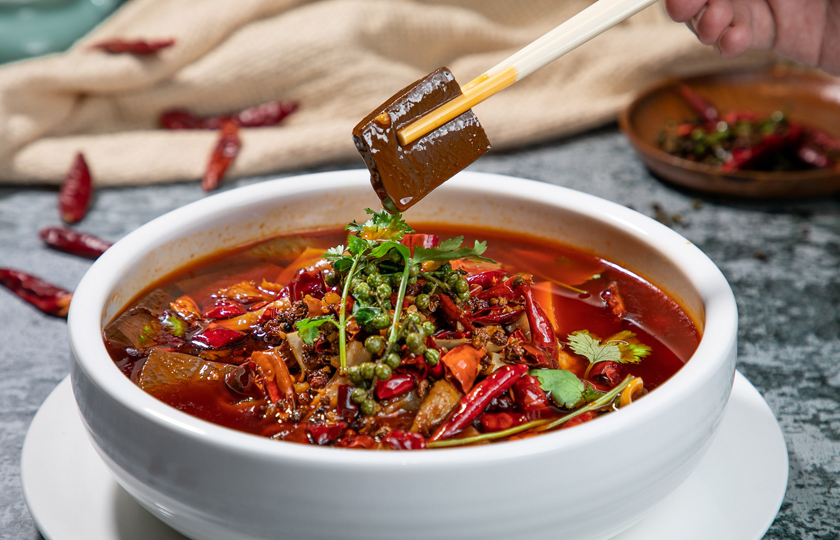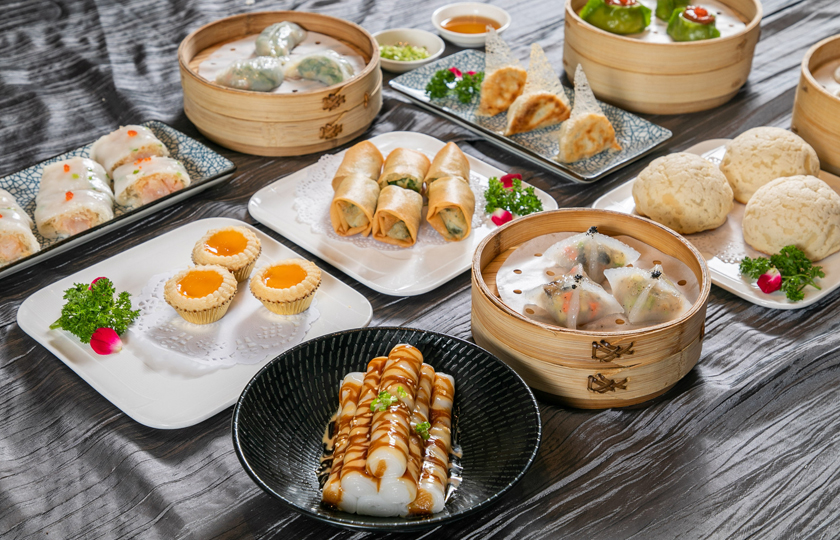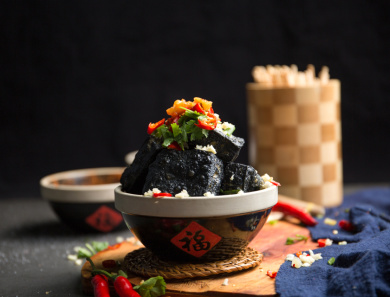Culinary Culture Comparison: What's the Difference between Cantonese and Szechuan?
When it comes to Chinese cuisine, people often think of various richly flavored Chinese dishes. Sichuan cuisine and Cantonese cuisine are hailed as the "twin stars" of Chinese catering culture.
As a food lover, let me take you to understand the main differences between Cantonese cuisine and Sichuan cuisine.
Different tastes
Sichuan cuisine is mainly characterized by numbness, spiciness, freshness, and fragrance. It pursues rich and complex flavors. It often uses seasonings such as Sichuan pepper and chili peppers.
It is good at using "three peppers" (chili peppers, Sichuan peppers, and black peppers) and "three fragrances" (green onions, ginger, and garlic) to highlight the characteristics of numbness, spiciness, freshness, fragrance, high oil content, and thick taste, giving people a strong taste stimulation.
Cantonese cuisine emphasizes highlighting the original flavor of ingredients. It is mainly characterized by freshness, tenderness, smoothness, slipperiness, and richness. It often uses seasonings such as light soy sauce, oyster sauce, and shrimp paste.
It is good at using "fresh ingredients" (fresh fish, fresh shrimp, fresh vegetables, etc.) and "spices" (ginger, green onions, dried tangerine peel, etc.) to highlight the characteristics of freshness, tenderness, smoothness, slipperiness, richness, and mellow taste, giving people a rich and delicate taste experience.

Different cooking methods
Sichuan cuisine is good at stir-frying, dry-frying, and dry-braising: Stir-frying is used for quickly cooking small pieces of ingredients. For example, in Kung Pao Chicken, high heat is used in a short time to cook the ingredients and lock in the flavor.
Dry-frying is mainly used for ingredients with coarser fibers, like dry-fried green beans. Through slow frying over low heat, the ingredients lose water and have a dry and chewy texture. Dry-braising is often used for fish and the like. For example, in Douban fish, the fish is fried until golden on both sides and then a large amount of seasonings are added for cooking to allow the fish to absorb the rich sauce.
Cantonese cuisine is proficient in steaming, stewing, baking, and blanching: Steaming is used to maintain the freshness and original flavor of ingredients. For example, in steamed fish, it can show the freshness of the fish to the greatest extent. Stewing is suitable for making soups and nourishing dishes. For example, in fish maw stewed chicken, slow cooking over low heat allows the nutritional components and flavors of the ingredients to fully release into the soup. Baking can make the ingredients evenly heated in a closed environment. For example, in salt-baked chicken, it locks in the juice of the chicken.
Blanching is to quickly blanch the ingredients in boiling water. For example, in blanched shrimp, after simple processing, it is paired with dipping sauce to highlight the freshness of the ingredients.
Different cooking concepts
Sichuan cuisine: Pursues rich and complex flavors. Chefs create a strong taste stimulation of numbness, spiciness, freshness, fragrance, high oil content, and thick taste by cleverly combining multiple seasonings such as "three peppers" (chili peppers, Sichuan peppers, and black peppers) and "three fragrances" (green onions, ginger, and garlic). This concept focuses on the transformation of ingredients by seasonings. Even ordinary ingredients can become mouthwatering delicacies under the action of rich seasonings.
Cantonese cuisine: Emphasizes highlighting the original flavor of ingredients. The cooking process tries to maintain the original flavor of ingredients as much as possible, emphasizing freshness, tenderness, smoothness, slipperiness, and richness. Cantonese chefs will carefully select fresh and high-quality ingredients when cooking, and then use relatively simple and direct cooking methods to fully display the deliciousness of the ingredients themselves and avoid excessive seasonings covering up the original flavor of the ingredients.
Different food cultures
Cantonese cuisine includes Guangzhou cuisine, Chaozhou cuisine, and Dongjiang cuisine. It pays attention to fresh ingredients and cooking emphasizes original flavors. The food customs are rich and diverse, such as drinking morning tea and having nourishing soups, reflecting the life and aesthetics of Cantonese people. The concept of health preservation runs through it, emphasizing the combination of diet and health.
Sichuan cuisine has a long history of food culture. Sichuan cuisine is famous for its diverse flavor profiles. There is a saying that "one dish has one style, and a hundred dishes have a hundred flavors." In terms of food customs, Sichuan people are warm and hospitable and are very particular about seasonings, emphasizing "harmonious combination of five flavors." Moreover, Sichuan people love to eat hot pot. The hot and spicy hot pot symbolizes a lively and festive atmosphere of gathering. These food cultures and customs reflect the life interests, customs and habits of Sichuan people, and also show the charm of Sichuan regional culture.

Sichuan cuisine recommendations
Traditional Sichuan cuisine: There are classic dishes such as boiled cabbage, Mapo Tofu, Kung Pao Chicken, Sliced Beef and Ox Tongue in Chili Sauce, Ants Climbing a Tree, Minced Pork with Garlic Sauce, Chicken Slices with Hibiscus, etc. These dishes have a long history and exquisite production techniques. They are representative works of Sichuan cuisine.
Hot pot: Sichuan hot pot is an important part of Sichuan food culture. It is famous for its unique spicy flavor and lively dining atmosphere. The ingredients of hot pot are rich and diverse, including various meats, seafood, vegetables, bean products, etc., which can be selected and matched according to personal taste.
Snacks: There are many kinds of Sichuan snacks, such as Dan Dan Noodles, Long Chao Shou (dumplings in spicy sauce), Zhong Shui Jiao (dumplings in spicy soup), Hot and Sour Noodles, Northern Sichuan Bean Jelly, Ye'er Ba (steamed glutinous rice dumpling), and Three Big Cannon, etc. These snacks are exquisitely made with unique tastes and are deeply loved by people.
Cantonese cuisine recommendations
Traditional Cantonese cuisine: There are classic dishes such as White Cut Chicken, Roast Goose, Barbecued Pork, Steamed Spareribs in Black Bean Sauce, Sweet and Sour Pork with Pineapple, Stuffed Tofu, Oyster Sauce Lettuce, etc. White Cut Chicken has yellow skin and white meat, with original flavor. Roast Goose has crispy skin and tender meat, with a fragrant aroma wafting everywhere. These dishes are exquisitely made and fully show the essence of Cantonese cuisine cooking. They are the signature dishes of Cantonese cuisine.
Hot pot: "Da Bian Lu" is a unique hot pot form of Cantonese cuisine. The soup base is particular, with multiple choices such as seafood soup and coconut chicken. The ingredients are characterized by freshness and tenderness. The seafood, beef and other shabu-shabu items are of high quality and focus on showing the original flavor of the ingredients.
Snacks: Cantonese snacks are mouthwatering, such as Shrimp Dumplings, Steamed Rice Rolls, Water Chestnut Cake, Double-Skin Milk, Wonton Noodles, etc. Shrimp Dumplings are crystal clear with full fillings. Double-Skin Milk is smooth and sweet. Each one has a unique flavor























